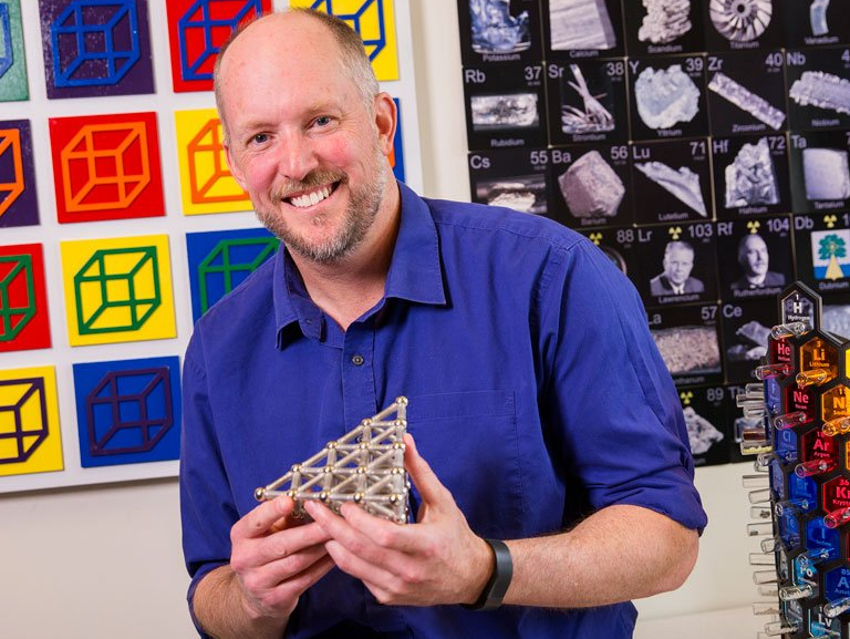Dr. Arlette Itken-Fuder, Senior Associate Editor of the European Journal of Inorganic Chemistry, talked to Professor Scott McIndoe, University of Victoria, British Columbia, Canada, about his article on the interaction of neutral donors like tetrahydrofuran (THF) and 2,2′-bipyridine with methylaluminoxane (MAO), an industrially important polymerization catalyst activator. The study aimed to investigate the influence of additives on the mechanism of action of MAO.
Professor McIndoe, your article deals with methylaluminoxane (MAO), an industrially important activator of polymerization catalysts. What does MAO consist of?
It’s hydrolyzed trimethylaluminum, but that description masks considerable complexity. It’s an oligomeric mixture that can be formulated as (MeAlO)x(Me3Al)y, with a molecular weight in the 1000–2000 Da range. This description leaves a lot of structural possibilities.
How did you get interested in MAO?
Longstanding problems in organometallic chemistry are always interesting, and we had a new tool—anaerobic electrospray ionization mass spectrometry (ESI-MS)—that seemed very promising to us. ESI-MS sees only charged species, so it is ideal for looking exclusively at those components of a solution. Only those MAO species that perform activation become charged, so we could ignore the inactive components of the mixture. The biggest surprise to us was just how simple the mass spectrum was after activation: the ion [(MeAlO)16(Me3Al)6Me]– was the dominating species.
Is it difficult to study the structure and properties of MAO directly? Do you need special precautions when working with MAO in the lab?
Yes. Complex mixtures are difficult to study by any technique, and no one has yet successfully grown a single crystal of an MAO component. Many other methods have been used to tackle the problem with limited success due to the complexity of the mixture.
ESI-MS has its own problems: Any hint of decomposition causes clogging of the fine capillaries used in this type of analysis. We go to great lengths to ensure an immaculately dry and oxygen-free environment inside the glovebox and mass spectrometer used in these studies. Solvents are dried conventionally outside the glovebox and then stored over activated molecular sieves for three days before use. The mass spectrometer is kept free of protic solvents and dried with dilute solutions of trimethylaluminum before use.
What methods and techniques did you use? Why did you choose them?
We used ESI-MS in conjunction with 1H NMR spectroscopy and density functional theory (DFT) calculations. There are some nice complementarities between the methods, each probing different features of the system. We already knew ESI-MS to be capable of providing compositional information on the positive and negative ions formed in the reaction. NMR spectroscopy provides data on all components, neutral and charged, and is particularly good at allowing us to determine the amount of [Me2Al]+ present. DFT gives us structural insights not provided by other methods.
How are you planning to continue your investigations on this topic?
We are currently examining the synthesis of MAO and following that process in real time mass-spectrometrically. We would, of course, love to isolate the [(MeAlO)16(Me3Al)6Me]– ion and structurally characterize it. However, crystallizing it from the complex mixture within which it forms has proved beyond us so far.
We are also investigating the other part of the equation: the catalytically active positive ions that form after activation. Their behavior is fascinating and gives great insights into the complex dynamics inside the complex soup of reactants, products, intermediates, resting states, byproducts, and activators present in solution.
Would you please explain the importance of your findings?
Catalysts make chemical reactions faster, and the best catalysts can do so even when present as a tiny proportion of the reaction mixture. While that is great for efficiency, it makes catalytic systems especially tough to study. But the key to making catalysts even better is understanding what is going on, and this article is a small step towards that greater goal.
The article they talked about
- Interaction of Neutral Donors with Methylaluminoxane,
Harmen S. Zijlstra, Anuj Joshi, Mikko Linnolahti, Scott Collins, J. Scott McIndoe,
Eur. J. Inorg. Chem. 2019.
https://doi.org/10.1002/ejic.201900153


